Xichan Lin
G-VAE, a Geometric Convolutional VAE for ProteinStructure Generation
Jun 22, 2021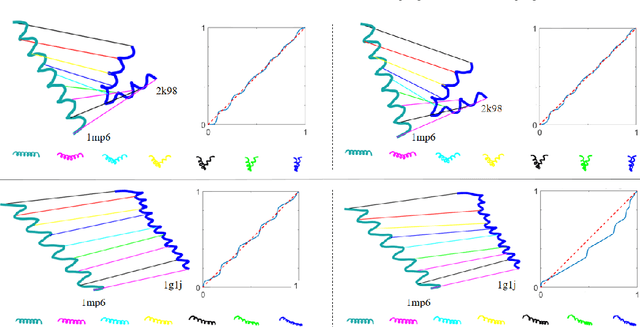
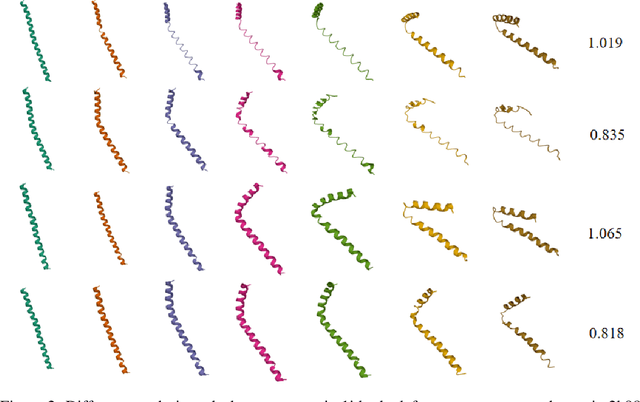
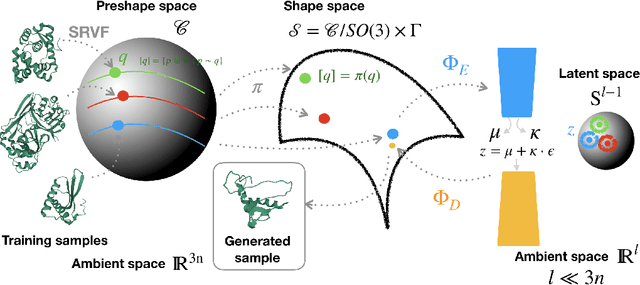
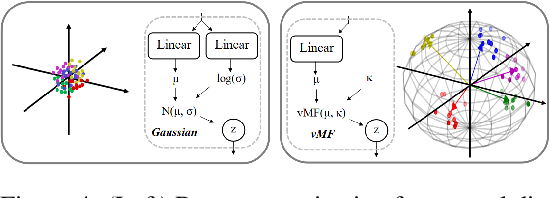
Abstract:Analyzing the structure of proteins is a key part of understanding their functions and thus their role in biology at the molecular level. In addition, design new proteins in a methodical way is a major engineering challenge. In this work, we introduce a joint geometric-neural networks approach for comparing, deforming and generating 3D protein structures. Viewing protein structures as 3D open curves, we adopt the Square Root Velocity Function (SRVF) representation and leverage its suitable geometric properties along with Deep Residual Networks (ResNets) for a joint registration and comparison. Our ResNets handle better large protein deformations while being more computationally efficient. On top of the mathematical framework, we further design a Geometric Variational Auto-Encoder (G-VAE), that once trained, maps original, previously unseen structures, into a low-dimensional (latent) hyper-sphere. Motivated by the spherical structure of the pre-shape space, we naturally adopt the von Mises-Fisher (vMF) distribution to model our hidden variables. We test the effectiveness of our models by generating novel protein structures and predicting completions of corrupted protein structures. Experimental results show that our method is able to generate plausible structures, different from the structures in the training data.
Residual Networks as Flows of Velocity Fields for Diffeomorphic Time Series Alignment
Jun 22, 2021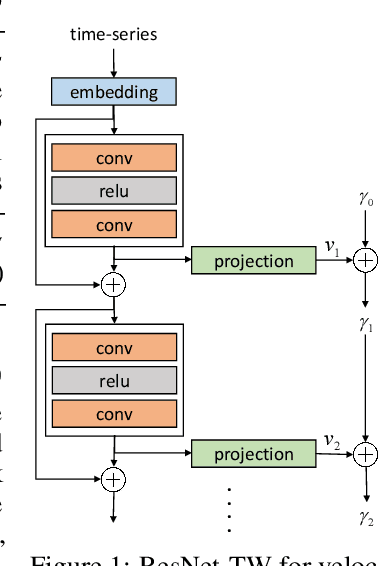


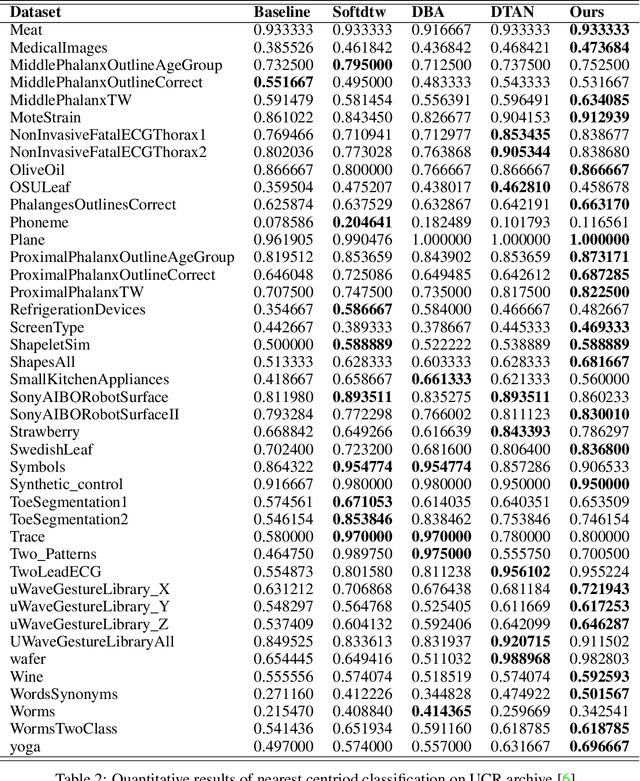
Abstract:Non-linear (large) time warping is a challenging source of nuisance in time-series analysis. In this paper, we propose a novel diffeomorphic temporal transformer network for both pairwise and joint time-series alignment. Our ResNet-TW (Deep Residual Network for Time Warping) tackles the alignment problem by compositing a flow of incremental diffeomorphic mappings. Governed by the flow equation, our Residual Network (ResNet) builds smooth, fluid and regular flows of velocity fields and consequently generates smooth and invertible transformations (i.e. diffeomorphic warping functions). Inspired by the elegant Large Deformation Diffeomorphic Metric Mapping (LDDMM) framework, the final transformation is built by the flow of time-dependent vector fields which are none other than the building blocks of our Residual Network. The latter is naturally viewed as an Eulerian discretization schema of the flow equation (an ODE). Once trained, our ResNet-TW aligns unseen data by a single inexpensive forward pass. As we show in experiments on both univariate (84 datasets from UCR archive) and multivariate time-series (MSR Action-3D, Florence-3D and MSR Daily Activity), ResNet-TW achieves competitive performance in joint alignment and classification.
 Add to Chrome
Add to Chrome Add to Firefox
Add to Firefox Add to Edge
Add to Edge